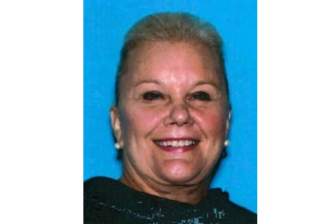The history of a community that’s held a presence in southwestern Ontario since the 1800s is now available at your fingertips, free of charge.

A group of museum curators, historic site administrators and community historians have come together to present a virtual interpretation of the region’s Black historical experience.
Providing virtual tours that cover areas in and around London, Middlesex County, Windsor-Essex and Chatham-Kent, the history has been made available online at the website www.OnThisSpot.ca and on the On This Spot cellphone app.
The virtual tour builds off an exhibit that was originally produced for Museum London.
Independent researcher and freelance writer Heather Rennalls served on the committee that led the virtual tour’s creation and describes the original exhibit as the brainchild of Michelle Edwards.
Hoping to fix a lack of local Black history events, Edwards sought the assistance of Museum London chief curator Brian Meehan and then-Museum London curator of regional history Michael Baker, who is now the curator for the Elgin County Museum.
What resulted was a brochure that explored the Black history of London and southwestern Ontario, however, when there was no mention of Oxford County and other communities, a committee of curators and historians was formed to expand the project.
“So we sort of revamped this brochure and then from the brochure it morphed into an online app,” Rennalls said.
The virtual tour adds to a growing wealth of knowledge surrounding Black history in Canada that wasn’t always readily available.

Get breaking National news
Growing up in Hamilton, Rennalls says she never realized how deep Canadian Black history was until she was in her 20s. That’s when her mother handed her a copy of The Freedom Seekers: Blacks in Early Canada by Dr. Daniel G. Hill.
“That was the first time I found out about Blacks in early Canada and was surprised to learn about slavery that existed in Canada and I thought, ‘how come I never learned this?'” said Rennalls.

Another discovery was made when a friend took Rennalls to see the Otterville Cemetery when she first moved to Oxford County in 1992, which also featured the site of the African Methodist Episcopal Church and Cemetery.
This sparked Rennalls’ curiosity about the Black community’s roots in Oxford County “considering there wasn’t a lot of people who looked like me in 1992.”
Her curiosity led to decades’ worth of research into Black history which Rennalls has compiled on her website, Heather’s Historicals.
Rennalls has also shared her work through exhibits, including one she’s presented as part of the London Black History Coordinating Committee since 2002 to mark the start of Black History Month.
“I meet a lot of teachers, vice-principals and principals … they’re finding that they don’t have the resources and they don’t know where to go for the resources,” Rennalls said, adding that groups like the Ontario Black History Society have made finding those resources much easier for those willing to look.
“There’s just so much information that’s out there now and I think that’s another thing, is to put some of this Black history into the school system, into the curriculum.”
Black history, Rennalls adds, is not just for Black people or Black History Month, but rather is for everyone, as Black history is Canadian history.
“We’ve been here for a long time. When people tell us to go back to where we came from … the only person who can say they’re ‘true Canadian’ are Indigenous and Métis people,” Rennalls said.
The virtual tour is also not just for Black History Month and will be expanded even further in the future with components such as recorded narration and music.
Organizers also hope users will plan a day trip around some of the spots seen in the app and visit them in-person, as Rennalls notes it only provides a “thumbnail” of what is there.












Comments